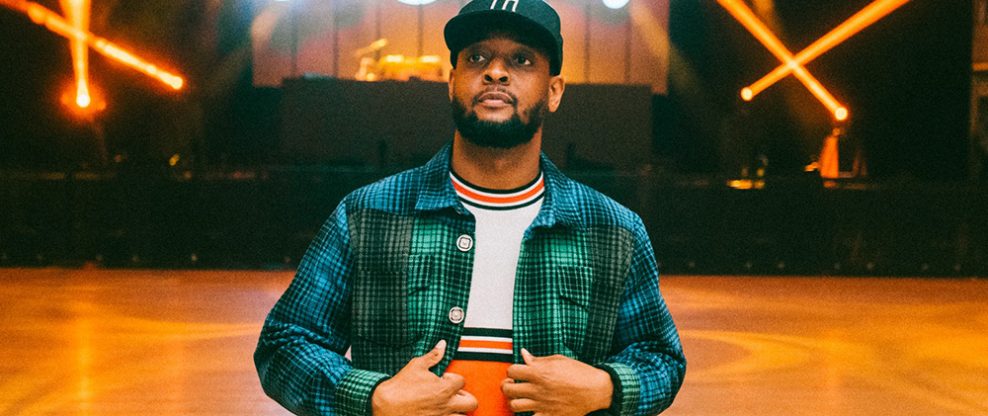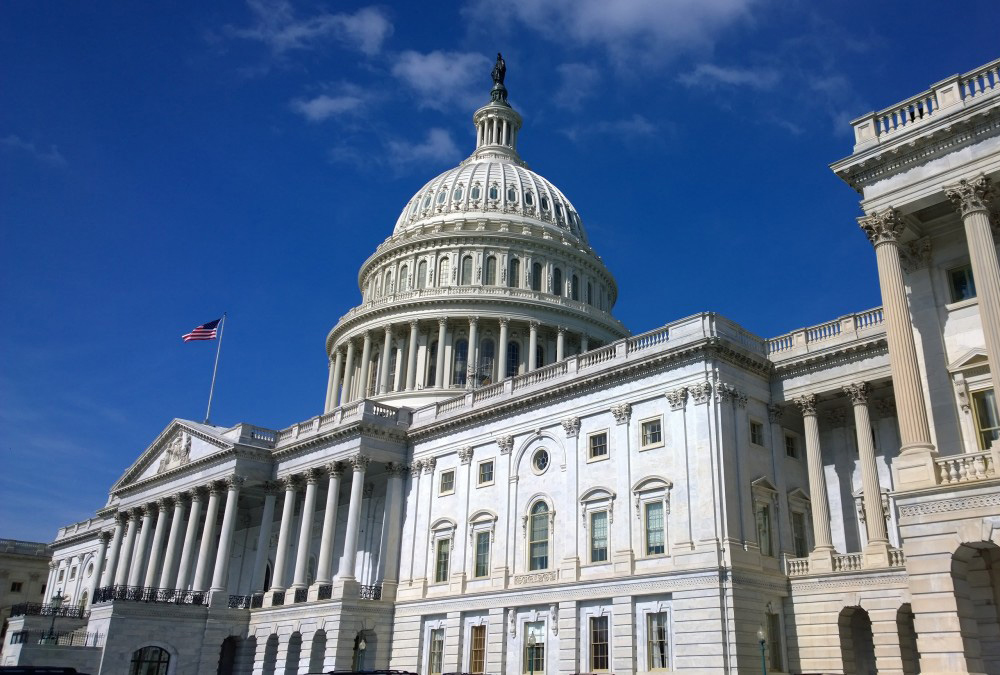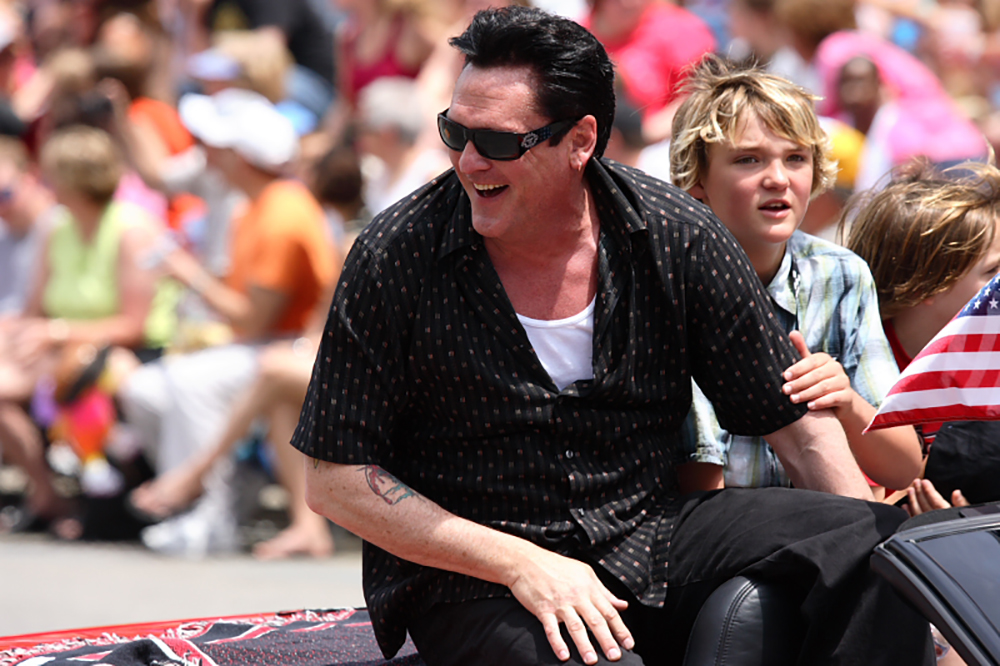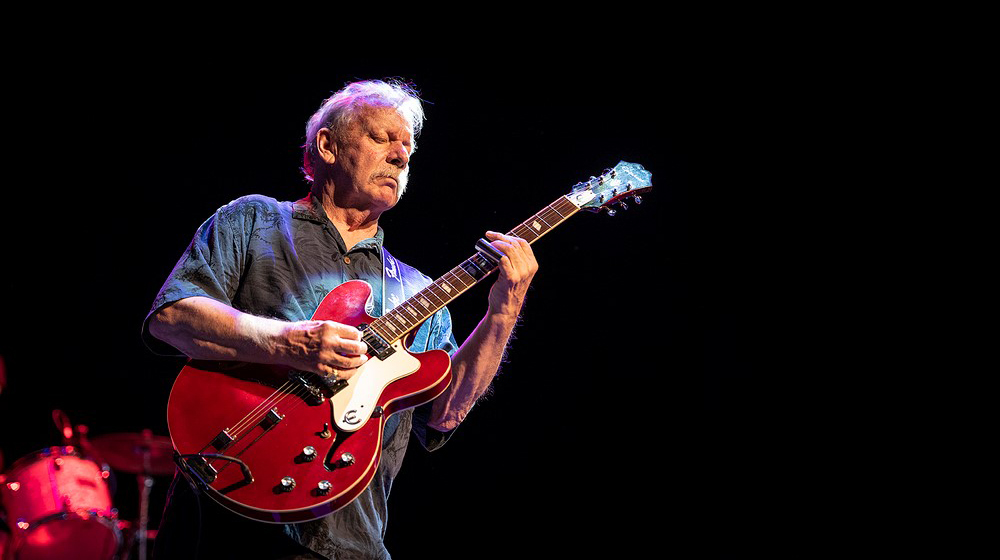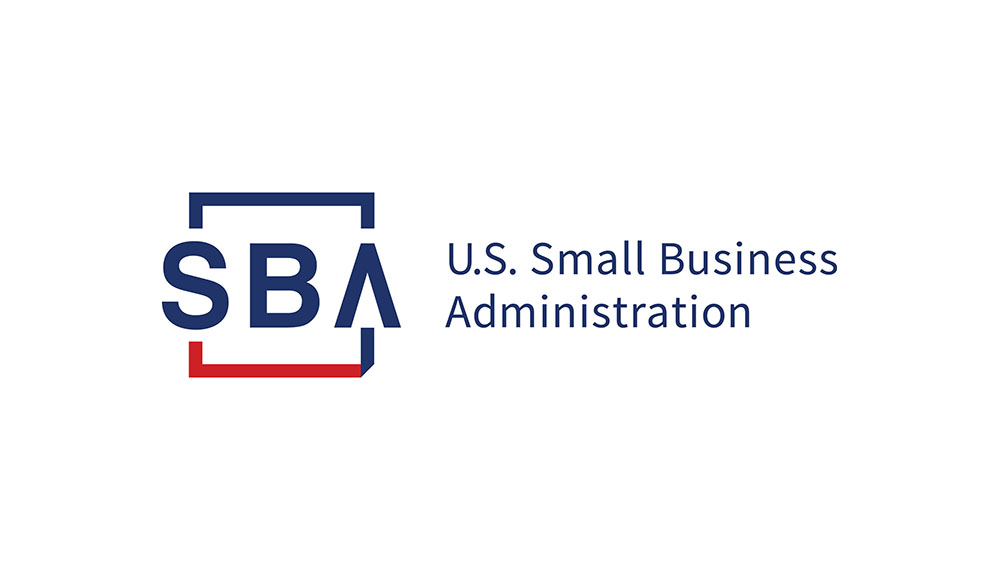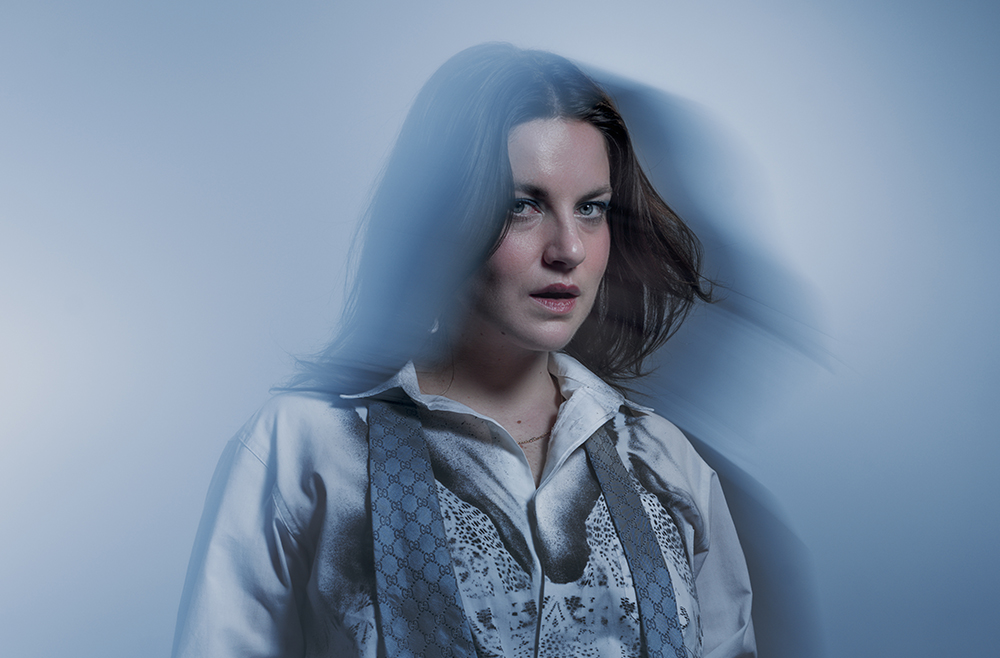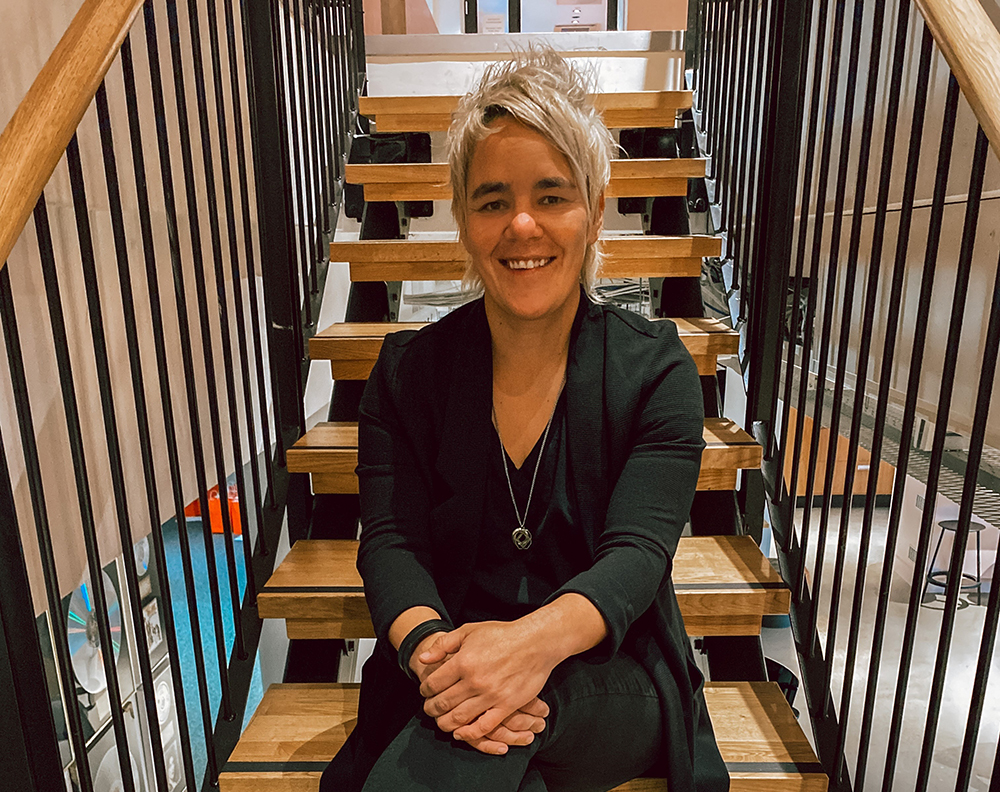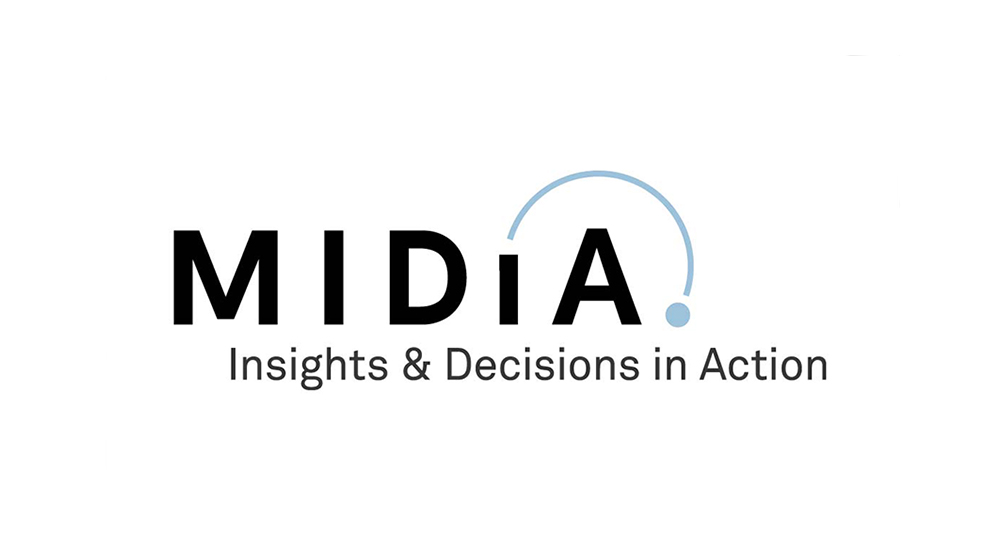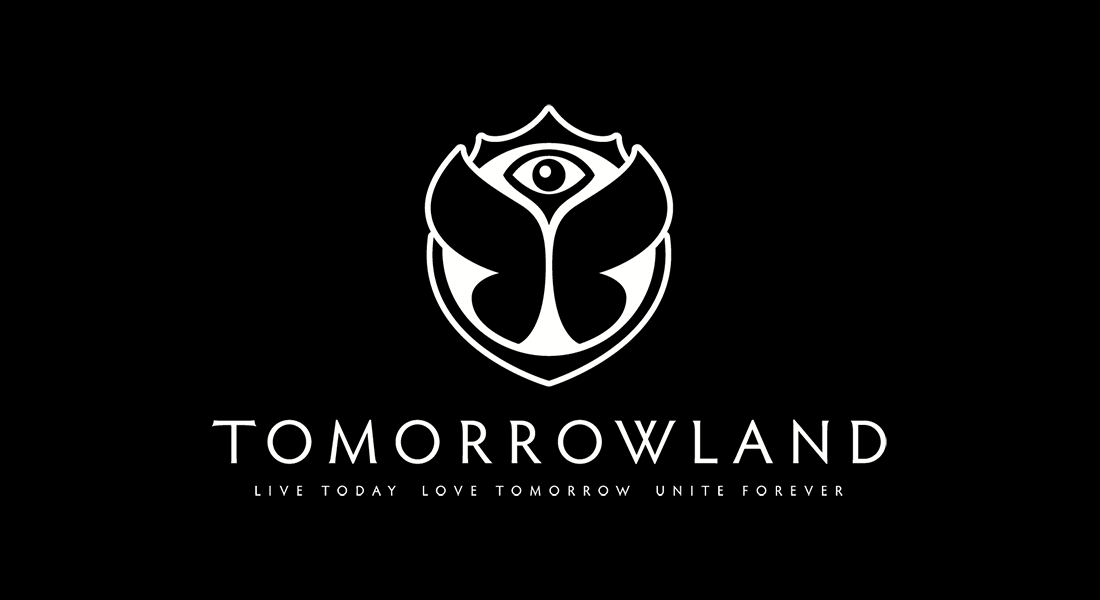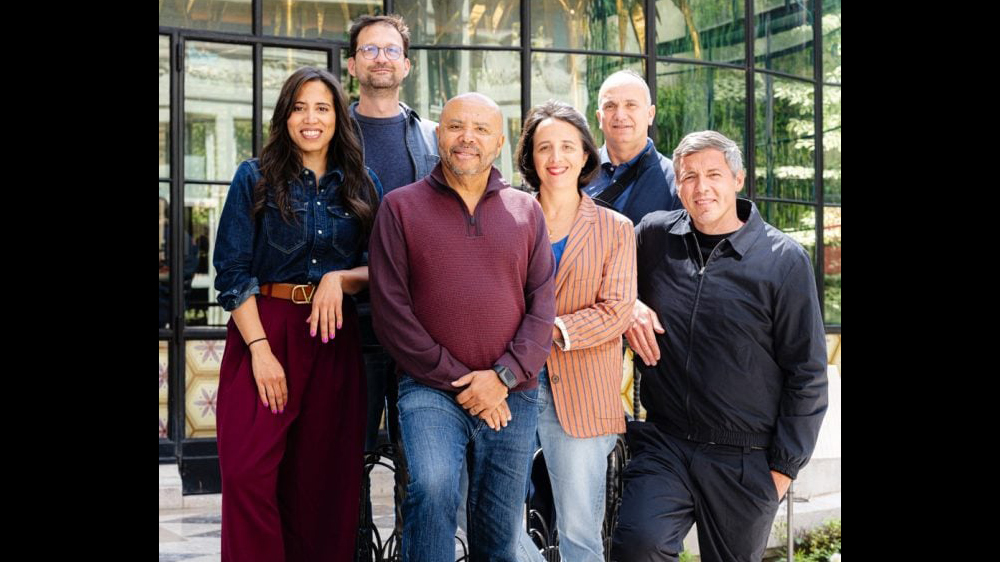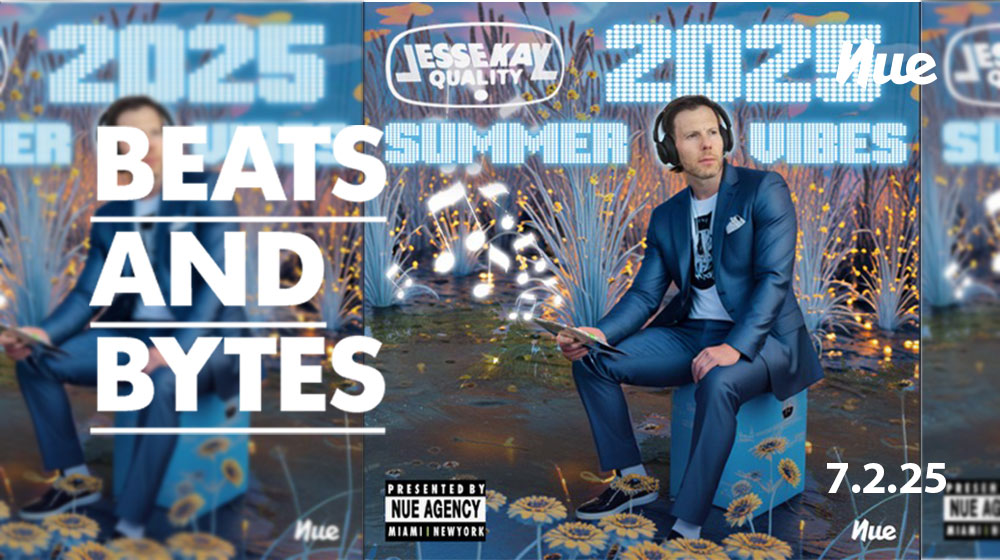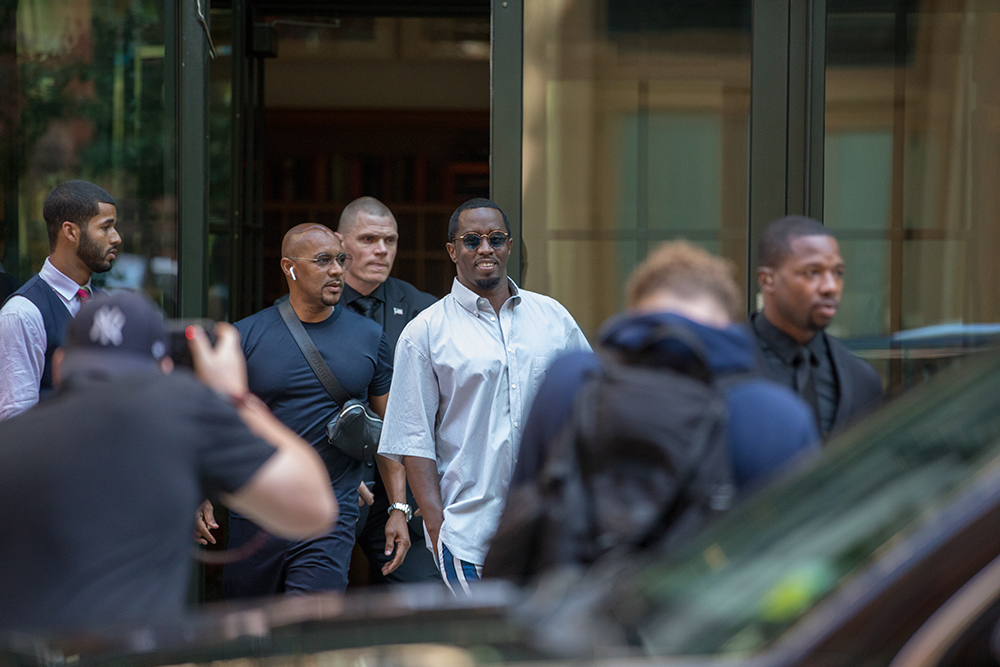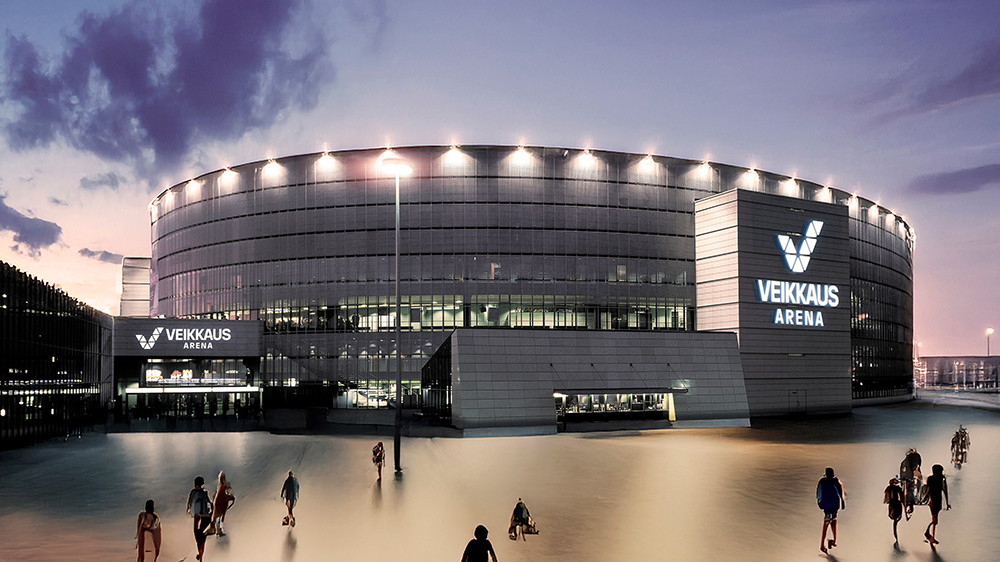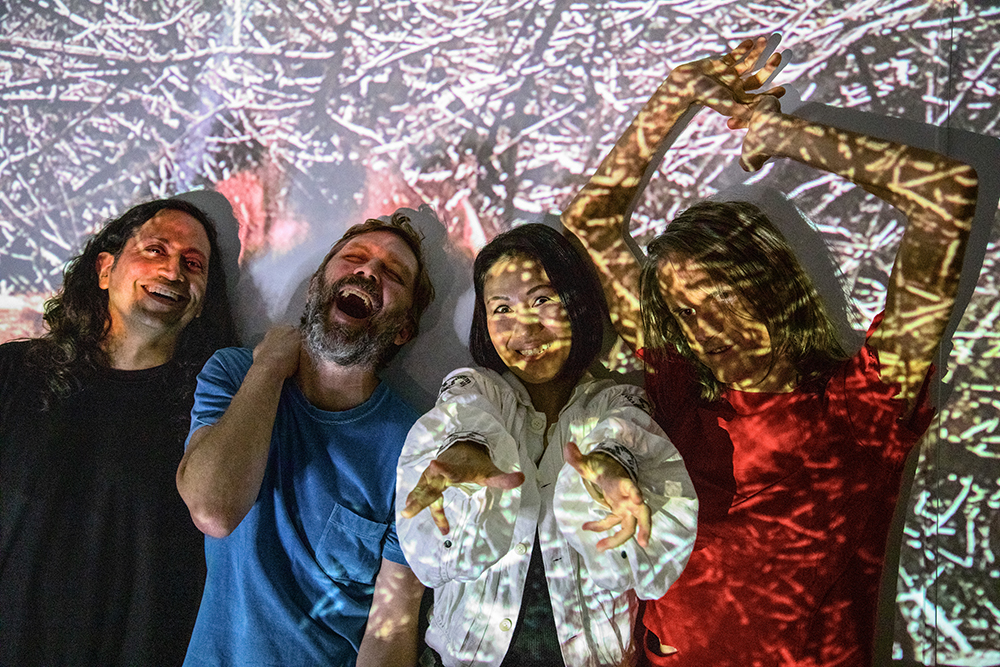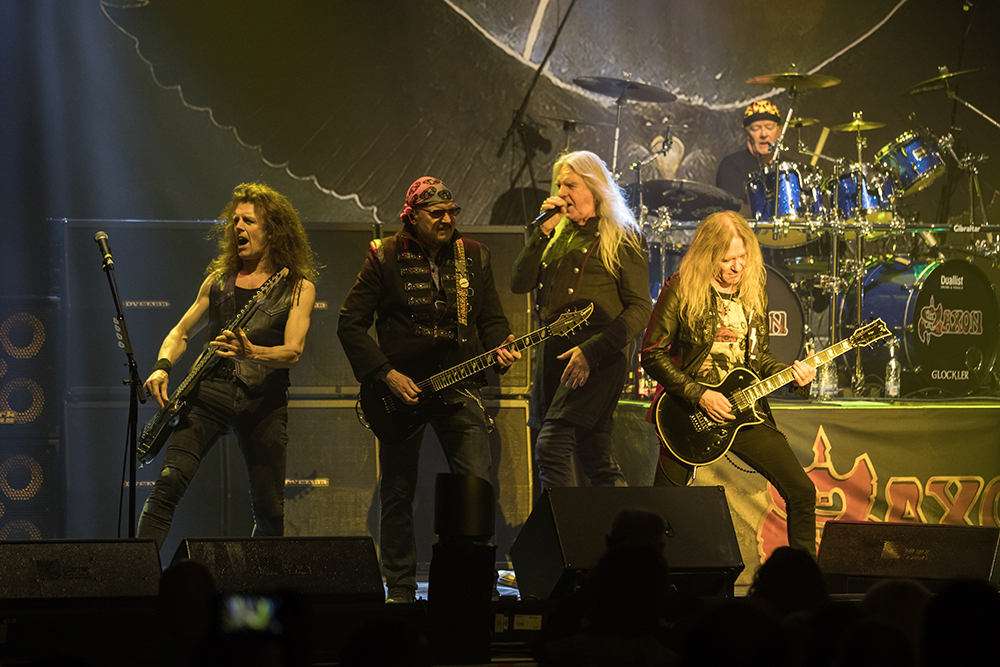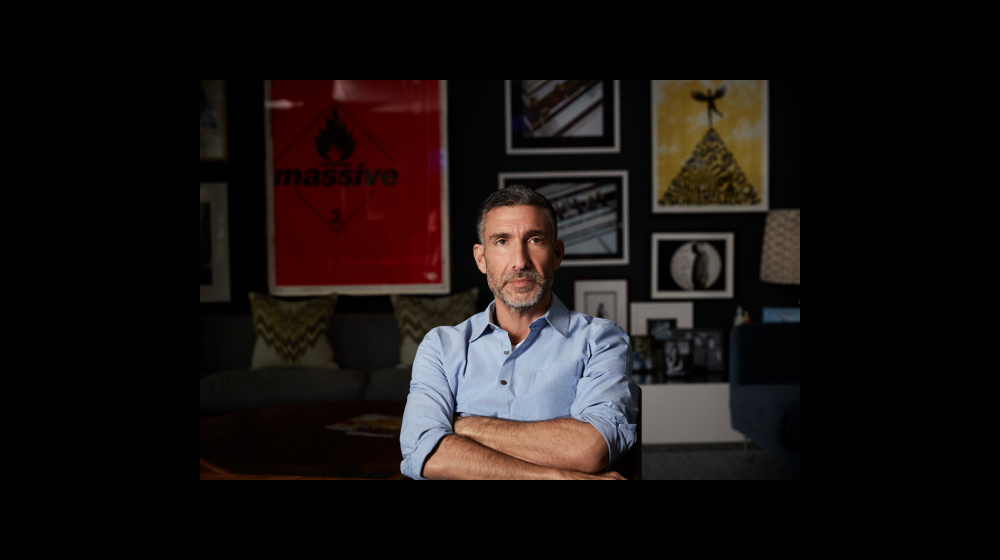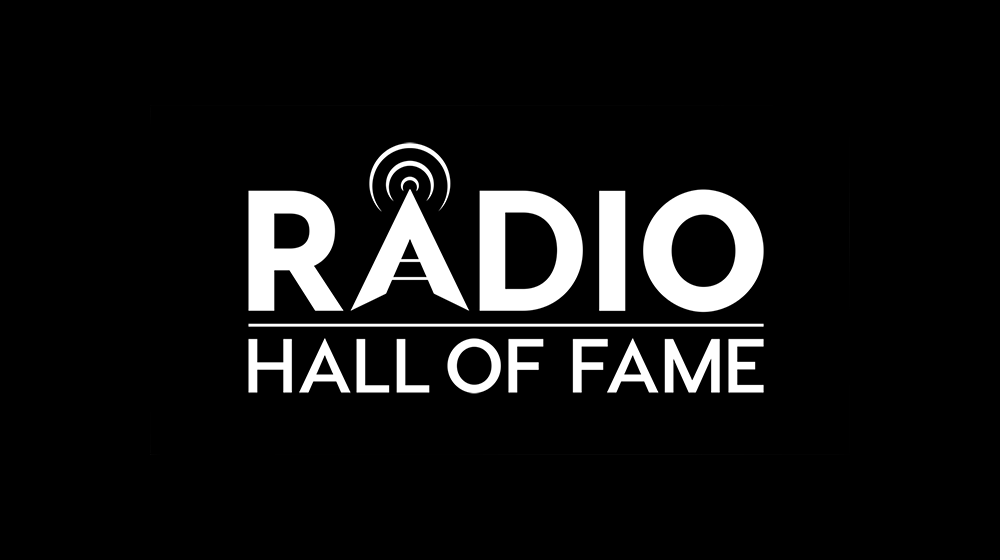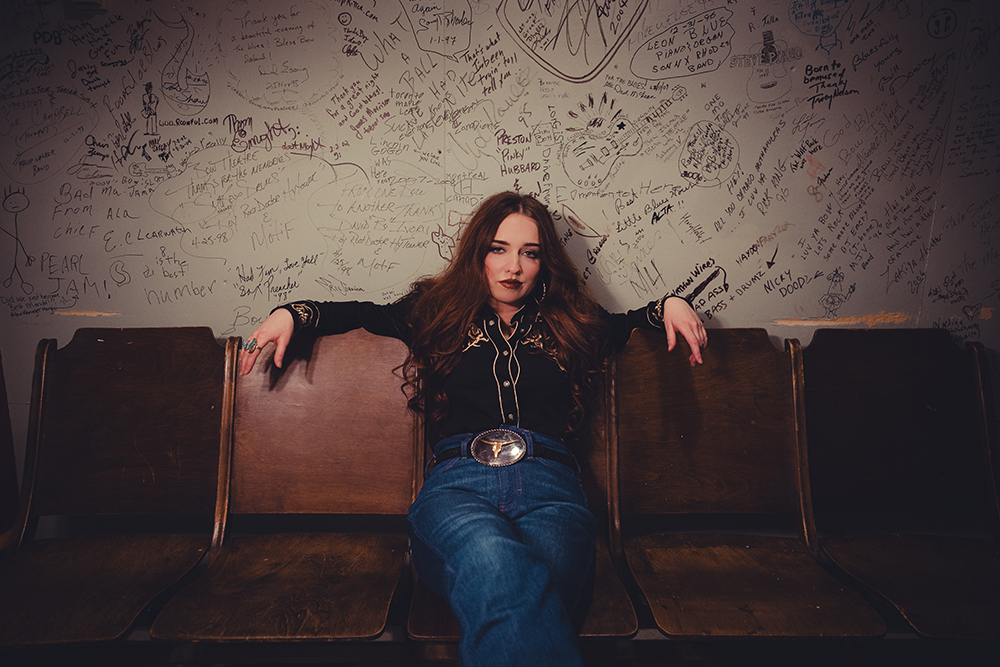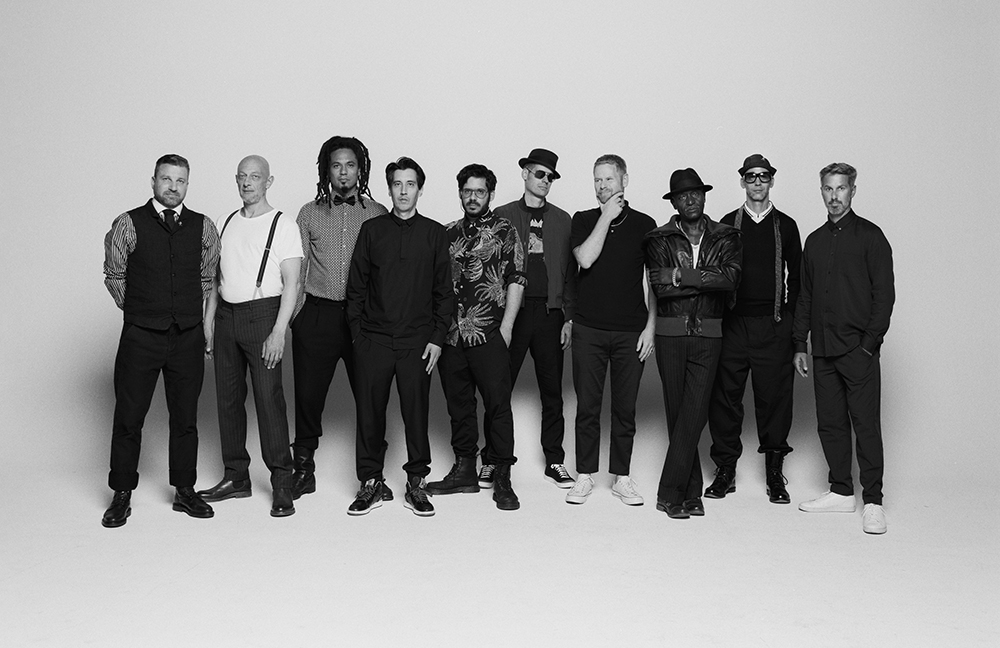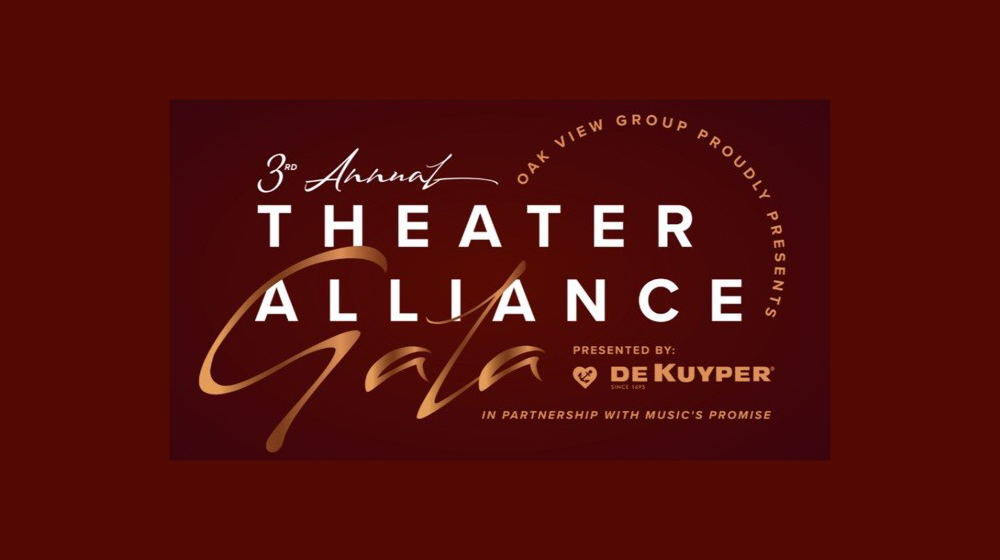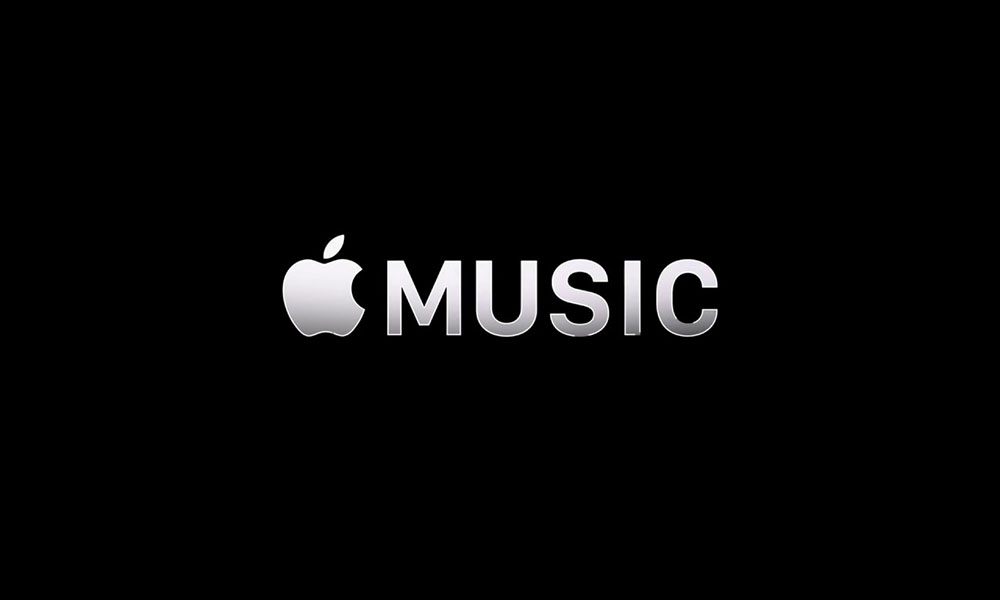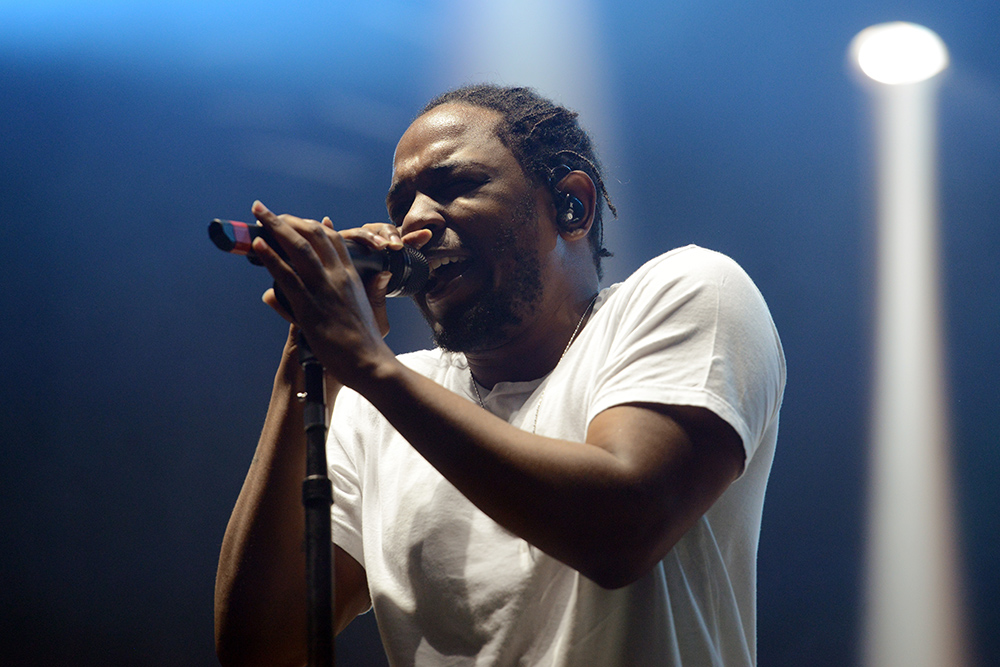This week In the Hot Seat with Larry LeBlanc: Jabari Johnson, CEO & founder,COLORS Worldwide, and R&B ONLY.
At 34, Jabari Johnson isn’t waiting for someone to offer him an opportunity, he’s driving his own career from Culver City, California, and he runs a 3.10-second career sprint.
In 2015, recognizing that R&B still remained vital to his live music events, Johnson launched COLORS Worldwide as an ecosystem designed to incorporate multiple underserved genres through live events, and content creation.
Next came COLORS Worldwide’s flagship property, and live event series, R&B ONLY, which has since produced over 200 events in more than 40 cities.
Signs of an R&B renaissance continue.
Consider.
On the cover of Vanity Fair’s “Turn of the Century” issue, Sean Combs, the artist-entrepreneur who has crafted his own eras from Puff Daddy to P. Diddy, and now Love, said he plans to start an “All R&B label.” He added, “I’m coming back into music, you know? I feel like R&B was abandoned, and it’s a part of our African American culture.”
Quality Control Music’s Lakeyah—hip-hop’s gal of the moment– took to Instagram on August 2nd to share a snippet of new material, and it has a distinct R&B flavor. “This new tape I’m reaching back in R&B bag cause I’m REALLY THAT,” wrote the Milwaukee native.
Bruno Mars and Anderson .Paak’s soul-inspired debut single as Silk Sonic “Leave “The Door Open” exploded earlier this year, and, they’ve now released their second single, “Skate” with the same R&B influence.
Meanwhile, after nearly a year away, R&B ONLY has returned to the live music space with a 23-city nationwide tour, We Back, that celebrates the genre with DJ sets from past to present. It kicked off in Charlotte, North Carolina on July 3rd at The Fillmore, and is slated to run to Nov. 27th at the House of Blues in Orlando, Florida.
Last month, R&B ONLY launched Sex Playlist, a weekly YouTube series that features celebrities, and R&B songs tied to their moments of intimacy.
R&B ONLY also launched NEW NEW, a weekly newsletter which is being released free to email subscribers every Friday. It includes tracks and albums selected by the R&B ONLY team and spotlights an emerging artist in each edition.
Prior to founding COLORS Worldwide, Johnson worked in the digital video department of the Capitol Music Group in New York City, and hosted and produced “Face to Face” on BET (Black Entertainment Television). In addition, he produced the online series “Jabari Presents,” featuring emerging hip-hop artists.
Johnson, however, was no newcomer to entertainment.
At 14, he was already going full throttle assisting Cleveland DJ legend Steph Floss. Eventually, he became an official DJ for LeBron James and the Cleveland Cavaliers, and a sales intern at Ebony magazine in 2007.
While attending Howard University (2005-2009), Johnson wrote for numerous publications and produced interviews for a music website.
Johnson graduated from Howard University with a degree in advertising and, as an early adopter to the digital space, he broke ground as an on-camera personality and producer, interviewing Justin Bieber and Nicki Minaj early in their careers.
In 2011, with his friend Kevin Storey, Johnson launched the event series Surprise Party in New York City. After a pretty good run, the pair decided to go in different directions. Johnson then launched COLORS that put together hip-hop parties of 500 people in New York, Los Angeles, and Washington, D.C. each month.
Johnson noticed that when R&B music was played at the end of the hip-hop parties, to slow down the evening, and let people know it was coming to a close, it was the most popular time of the night, and some of the audiences were showing up late just for that moment.
As a result, Johnson then placed his bet on developing COLORS Worldwide, and R&B ONLY.
You said when you launched COLORS Worldwide and R&B ONLY in 2005 that it was because of a void in the marketplace. I’m not sure that there was a void as much as you realized that with hip-hop there was too much industry traffic. There were far fewer people working in R&B, which was re-emerging as a cultural force.
Yeah, especially with the live thing. Absolutely. That is what I meant by a void. I think that there was a void in the live entertainment space for R&B music. So we tried to come in, and fill that void with an experience that can bring together people who love the genre, from past to present, and just celebrate the music in a unique way.
At the same time as hip-hop had exploded and nurtured a great deal of media attention, there were restrictive obstacles. The mainstream music industry largely stayed away. Radio wouldn’t play hip-hop. Tours were nearly impossible. Hip-hop had the spotlight, but at a club level in America, R&B was still happening. R&B never got stalled at the club level.
You are right. People started going to local places. What I saw though from a touring perspective, and what was happening in the touring space with national tours, I didn’t see anything like what we would bring to the table.
Having R&B ONLY pause live events this past year was difficult, but you are clearly back with the 23-date We Back national tour.
We Back is a reference to the COVID-19 pandemic, and us shutting down for over a year. Just letting people know that we are still here.
So far have all of the shows gone off?
Some shows in July—three– had to be postponed because of COVID-19, but we had all of the other shows happen. It’s been all over the place. But we are following all of the guidelines, and making sure that, hopefully, that all of the shows coming up soon on the calendar are still going to happen.
Essentially, your teams have to travel to each selected city, and once reaching the venue, ensure that it’s safe both for themselves and for the audience?
Absolutely.
That’s a lot of boxes to tick off. Do you think in hindsight you, perhaps, went out too early?
Ah no, I don’t think we went out too early. But we are at a point with this new Delta variant where we don’t know what is going to happen. It is so contagious, and everything is so up in the air in terms of what is going to happen. If you had the vaccine, and you get the Delta variant what do you need to do? Are you going to be asymptomatic? Are you going to be or not? So everybody is trying to figure that out. We always abide by state and local mandates, but we don’t know at the end of the day what is going to happen in the future; until they know more about what is going to happen. We are just going to keep trying to be as safe as possible and keep chugging’ along. If it gets to the point of needing to rethink things, then we will do that once we hear from the state and local authorities.
What size crew do you travel with?
It really depends. It depends on the scale of the show. We have multiple crews that do multiple shows. I don’t go to every single show. I would say on the low end, it could be 5 people. For larger shows, it could be anywhere up to 8 or 9 people. That is why we have been able to scale our business and grow so fast because we have been able to keep the personnel quite low. We have been able to be nimble, and have multiple shows on the same night in multiple cities, and cover more ground. Our fans are fans of the brand, and not particularly fans of one of us (DJs) as individuals. Even though we still have fans of our DJs and hosts, but what people are paying money to see is the brand, and to get that experience from us which is what we work hard to be able to replicate, and do simultaneously all over the country.
Do all your crew members have the two vaccines?
Most of the crew. People have different opinions of when they are going to get the vaccine. If they are going to get the vaccine. And because people don’t know if they can still get a breakthrough case with the vaccine everybody is just trying to wait for the information for the people who might not have it.
Are most of the audiences for R&B ONLY events black?
No, no. Most of the audience is not, actually. Blacks and Latinos make up the majority of the audience for sure, but it really depends on the market that we are talking about. Now that we are doing stuff that is not just in the live space, we don’t see everybody that is on YouTube with us.
Along the way, you have stayed in touch with your audience base via email and online activities?
Yes. Absolutely.
A lot of influencers are not doing the same because many of them rely too heavily on their brand partnerships. However, every brand that offers to pay them to promote something is not going to be a good fit. They sometimes grab the brand partnership at the cost of not seeing a greater communication with their followers. Short-term thinking, really.
Very true. Very true. This is something that has been important to me since day one because you never know when things are going to change. You never know when algorithms change. You never know when a social network can go kaput. Just disappear. So, for me, the only way that I can guarantee that we can still be in communication with our audience is to have as much of a direct relationship with them as possible. And that’s phone number, and email. Those are things that don’t really change in a person’s life. So we are super active in communication with our audience as much as possible without being annoying.
Your events utilize top-of-the-line, cutting-edge technology. To that end, you have brought in distinctive LED walls to your shows. At one point, you flew to China to meet with designers in order to custom design a wall, and ensure you were getting the best of the best.
The event experience itself is increasingly changing.
Most promoters are working to extend the live event experience to those that can’t physically be there, or to those who were, and want to remember it. While fans are now experiencing mobile teleconferencing at events, Oculus and others now offer virtual reality experiences where a promoter can control an entire space. Is that where you are heading too?
Totally, totally. I have a creative programmer on our team who does a lot of our lighting and visuals. He’s always looking at new technology, and new things that we can do. In the future, something that we definitely want to get into is XR, augmented reality, and doing XR stages. You might come to a show, and see a virtual show, and it would be something where the environment, the DJ, and the host are constantly changing. We are also looking at having live streams or virtual concerts that look like this. It is something that is absolutely on the horizon in the future. So we are looking at different environments to create; different things and experiences that we can do; and looking at the experiences that we can produce through this. The challenge, especially when you are doing a XR stage and set-up, is that there is so much more training that goes into creating those worlds.
Futurist Ray Kurzweil’s book “The Age of Spiritual Machines — When Computers Exceed Human Intelligence” (1999) was among the first of his books to augure the convergence of human life with technology. Creating meetings and events through virtual reality.
It is incredibly exciting. I am absolutely looking forward to it, getting into all of this stuff.
For your first show with R&B ONLY in L.A. 5 years ago, what did you attract, maybe, 200 people?
Yeah, yeah it was about 200 people. I can’t remember the name of the venue. It doesn’t even exist anymore. It was like a larger bar venue. So there was a stage and that kind of thing, and It had an upstairs and downstairs.
The next one you probably had 400 people.
Yep. It literally doubled, and it got to the point of, “Like wow. We have to move this into a more traditional concert venue.” Then the rest was history after that.
How did you get the word out about the earlier events? Hadn’t you been doing smaller hip-hop parties before that?
Yeah, I had been doing hip-hop parties called COLORS. I had been doing parties that were pretty small, but I thought they were pretty big at the time with about 500 people.
These were in L.A., Washington D.C., and New York.
That was because I was living in L.A., and working. I had just moved from New York. I used to work for Capitol Records there, and after that, I was living in D.C. for school. I went to Howard University. I had roots in each of these cities. So I was doing parties in those three cities and, at the end of those hip-hop parties, I would play the R&B set, and I saw the reaction of people. And it seemed like those moments in the nights, they were a lot of fun. People would just come for that part of the night. So I asked crowds, “If we did an R&B night would you guys come?” Everybody went crazy. So the hip-hop parties were called COLORS. When I decided to make R&B events I said we have COLORS as a company, and COLORS Worldwide became the company that produced R&B ONLY.
Early on, you saw the importance, if not the symbolism, of centering R&B ONLY’s shows around black female DJs, including DJ Dauché who is the resident DJ at the Phantom Lounge and Nightclub in San Diego.
You almost never see that, and that is what I think is amazing about our show is that we will do a show with 2,000 or 3,000 people, and there is a black woman DJ who is controlling that crowd. Oftentimes, that is the first time that people have seen a black woman on that type of stage in front of that many people as a DJ. You just don’t see it. A large part of our audience, being black and Latino women, they see themselves up there, and there is a different level of connect when they come to our shows, and they see that.
Did you have live acts at the R&B ONLY shows early on?
We did, but it was never announced. It was surprise only. Once we started getting to the point of making some money, and growing the brand, I was friends with a lot of different artists and managers through my career in music, so I would talk people into, “Hey, why don’t you just come and do a pop-up? Why don’t you do a surprise guest set?”
Why so informally?
I just thought that the element of surprise was far more effective. I never wanted to act like a promoter and promote artists and try to get people to come out to the shows because of the artists that were going to be there. I just wanted to have people trust our DJ skills, and the ability that we had to bring them on this journey that went through all types of R&B. I noticed that when a surprise guest would pop out, people had no idea who they were; or they had no idea who was going to be there that night. It was a whole different reaction from the crowd. So, yeah, we had people over the years that popped out and surprised the crowds at shows.
What you essentially were doing was branding R&B ONLY.
Yep, absolutely.
The strategy being to own the audience.
Yes, totally, and it’s like that even now. We are getting in many things outside of R&B events. Last month (July), we put out our first digital series, Sex Playlist, where various celebrities come on, and talk about songs that are on their Sex Playlist which are 90% R&B songs, and then we stitch that content together in a comedic way.
I watched the premiere episode that featured comedian Bigg Jah, intimacy expert Shan Boodram, comedian Teddy Ray, singer/rapper K Camp, and R&B artist Marc E. Bassy.
Yes, with Bigg Jah.
He’s very funny.
(Bigg Jah—aka Jahdai Pickett—is a comedian, actor, writer, director, and influencer from Los Angeles. After getting his start behind the camera filming sketches for other comedians, Jah grew his own fan base and social media presence to over 1.5 million subscribers on YouTube and Facebook with everyday hood comedy sketches that even a mainstream audience can relate to.)
The second episode was hosted by author and intimacy expert Shan Boodram who authored the 2019 book, “The Game of Desire.” In this episode, her linking her sexual awareness to Janet Jackson’s erotic 1997 track “Anything” pushes the cultural envelope.
What’s interesting about Sex Playlist is that with so much white noise media out there, it is difficult to discover new acts. At one time, almost every emerging act was quickly discovered by their genre’s audience. Now not so much. Today, like many people, I go down rabbit holes on YouTube to discover emerging acts. Sex Playlist is somewhat the same, but the music is curated and has great introductions. Top 10 listed songs introduced with many artists I don’t know? I get it.
Yep, absolutely. It is a way to take a look inside someone’s personal relationship with R&B, but it is also a show about discovery. These are songs that are all over the place, right? It could be a new song from a celebrity, an old song that a celebrity loves. Every celebrity that we feature there is going to be at least one song that even the biggest R&B fan might not have heard. I think that is the cool thing about the show. The list is so personal to the celebrity guest that we have there is usually one or two songs that you might not be super familiar with. So that just adds to the discovery and the unique way that we are trying to promote R&B music through and through.
Sex Playlist will be up on YouTube every Wednesday?
Yep, every Wednesday on our YouTube channel.
Also launched recently is NEW NEW, a weekly newsletter being released free to email subscribers each Friday. It includes tracks and albums selected by the R&B ONLY team. and it spotlights an emerging artist in each edition.
That is totally focused on, “Hey, this is all of the R&B that came out to date, and you should listen to this.” NEW NEW is what it says in the title. Like you said, there are so many places to find music. A lot of times it can be overwhelming for a fan. They don’t know when playlists are being updated; or if they are following an R&B playlist on Spotify, sometimes it’s hard to figure out which songs have been recently added. So this is, “Drop your email here, and every Friday we will send you what we think are the top songs that came out the best songs that came out or the best albums that came out. Take a listen to what people who love the genre like.” Our team sits every week, and we go song by song, album by album, and listen to what is happening in the space. Sometimes we might get into an argument “This should be in the email. No, this should be in he email.”
How many people are involved in the decision-making?
It’s about three or four involved.
Before media consolidations, AM radio DJs picked their music, and their listeners trusted their choices. The same with the earliest days of contemporary FM radio, especially with free form and specialty shows. With VJs on MTV, MuchMusic, and BET there were still specific curated shows until the stations becamegentrified.
Then came internet-driven Pitchfork, Rap-Up, Alt-Citizen, Stereogum, Pigeons & Planes, and others,
I don’t take Spotfiy’s recommendations seriously. Spotify influencers and algorithms miss the mark for me.
I agree. NEW NEW is totally human curation versus algorithms.
I prefer going down rabbit holes on YouTube, but not on Spotify which feels restrictive.
To go down a rabbit hole on Spotify is to really end what you really wanted to listen to, and just let Spotify choose the rest.
What do you consider R&B music? After all the term has undergone a number of shifts in meaning since originating in African-American communities in the 1940s.
Anything that I consider to be R&B is more from the artist perspective than what we, as an organization, deem as R&B. If the artist is self-classifying as R&B that’s is what we kind of include in coverage, support, and all that.
R&B has morphed into what was being played at the end of hip-hop events as they were winding down for the night. You took notice and launched an R&B business venture.
Yes, absolutely. That is the evolution of where R&B is now. It is not just slow wind-down music. There’s up-tempo R&B. There’s R&B that has an element of hip-hop. There’s R&B that is all over the place in terms of BPM. I think that is amazing, and that’s cool. I think that’s the evolution of R&B music.
Did you grow up with your parent’s record collection?
Yeah, definitely. My mom listened to different types of music. A lot of the stuff that I know from her is the O’Jays, and even the Delfonics. All kinds of stuff. But then my mom also listened to contemporary music when I was a teenager, She got me into Erykah Badu, and that kind of thing. She listened to music from her younger years, but also embraced the stuff that was going on in the ‘90s as well.
Being 34, you’d consider the late ‘80s and ‘90s as the sweet spot for R&B with the popularity of Usher, R. Kelly, Janet Jackson, TLC, Aaliyah, Destiny’s Child, Tevin Campbell, Mary J. Blige, Toni Braxton, and Boyz II Men.
Meanwhile, Drake, John Legend, Bruno Mars, Kelis and Miguel, and others have since successfully adopted the genre.
Everybody knows the ‘90s for being the golden era and quintessential time frame for the genre but I think that now, just as other genres have evolved, we are seeing that same evolution happening with R&B music. It’s all over the place. All types of R&B are welcome. That’s what we try to elevate and push with our business for sure.
I’m older than you. So I can speak of the ‘50s, ‘60s. ‘70s, and ‘80s as also being sweet spots for R&B.
Over the years, there were R&B defining moments from artists with such labels as Atlantic, Stax/Volt, Duke/Peacock, Motown, and Philadelphia International Records, to name a few.
In the 70s, Earth, Wind and Fire, Parliament, and Donna Summer helped to define a new decade of soul music which had a profound impact on rap and hip-hop which sampled the era’s funk tracks to produce a new genre that has lasted.
(The term rhythm and blues wasn’t used by Billboard magazine until 1949. Prior to the introduction of its R&B chart, Billboard had grouped up-tempo boogie-woogie, hot swing, and blues singles into what it dubbed the Harlem Hit Parade chart. Billboard continued to rename the genre’s charts; utilizing Hot Soul Singles for most of the ‘70s; Hot Black Singles for much of the ‘80s; Hot R&B Singles in the early ‘90s; and Hot R&B/Hip-Hop Singles & Tracks from 1999 onward.)
So R&B has had staying power.
Yes. Absolutely. It is like the backbone of a lot of music. A lot of music was derived from R&B music.
Long before rap and hip-hop dominated the music culture, African American music had been the heartbeat of America and emulated around the world. Today, however, there is an increasingly divided America in which one sector of the population did not grow up listening to R&B music or watching “Soul Train,” BET and its spin-offs, or the Black Music America network. They haven’t listened to 2 Chainz, Gucci Mane, or J. Cole. But if you ask if they like certain R&B artists, they will say, “I like that.” But, “Do you like R&B?” And the answer is, “Hell no.”
Yeah, yeah, that is a thing with a lot of people and because R&B has influenced so many other different genres and so many different things, I think that sometimes it has a hard time with classification. People might not think that a pop song that is really popular is R&B because it got to a popular level, and it has sort of eclipsed black or urban radio. It’s popular, and it’s on mainstream radio, but the song is an R&B song. You find that happening a lot.
Let’s talk funding. As we both know, black-owned businesses rarely receive VC funding. According to Crunchbase, the share of U.S. venture capital going to black-founded companies stood at just over 3% of the $156. billion of 2020’s overall deal volume. Funding isn’t easy in your world.
Not at all.
As a result, when you decided you needed capital for expansion, you instead went to equity crowd-funding which not only provides financing, but also delivers a better position for you to make decisions you think necessary for your company’s future while allowing fans to participate in your potential growth.
We have various different types of funding opportunities. Like, just in general funding, the business operating from just our own profits has been something that I have wanted to do. I didn’t want to make a business that was dependent on getting investment and raising capital.
You have said that in 2019 that you received an offer of $1 million in venture capital from private investors. You wrote that the reason you turned it down was their values didn’t align with your culture. It’s all about control, right?
Yeah, you lose control. Absolutely. Aside from just losing control, this isn’t a way to run a business. I want to be profitable. I want to spend less than what we bring in at the end of each year. When we were approached by various investors, and things didn’t pan out the way we thought they would, we have since done an alternative to a traditional investment opportunity where we allowed our fan base and people who have supported us to become investors in our company. There are so many different and unique ways to raise capital right now. We did something on https://www.startengine.com/rnbonly where we allowed our fans to participate and become investors in the organization.
How about brand partnerships?
Brand partnerships are something that we have been looking at. We haven’t done as many as we would like to do. We are still open to it. It just has to be the right ones. We are just not going to allow any brand to slap their brand name on something that we are doing just because there is money involved.
You have to consider the trust you have with your audience.
Absolutely. We don’t want to do something that our audience isn’t going to be super into. That’s why it is important for us to run the business in a way that we aren’t relying on brand partnerships. A lot of people in the event space, especially when you are talking about festivals and tours, just large-scale concerts at the level that we are at, a lot of people don’t do it without brand partnerships. But for us, we didn’t want that to be something that we relied on because we don’t want to compromise the integrity of our brand, and our relationship with our audience, just to put another brand in front of them.
You were raised by your mother?
I have had both of my parents in my life, but I was primarily raised by my mom, yes. Nine months out of the year I was with my mom, and three months out of the year I was with my dad who always lived in New York. I spent time with him in Westchester County. But pretty much it was all over the place with my mom. We moved around a lot of different places. We lived all over New York, everywhere from the Bronx to upstate New York in Ithaca where Cornell University is. We finally landed in Columbus, Ohio for the end of my middle school, and all of high school.
Fresh fish coming into new schools.
Yeah, yeah. That had a huge impact on my life because I had to learn how to be friends with so many different types of people.
Any other kids in the family?
Yeah, I have four half-sisters. They are all on my dad’s side. I sort of lived this life as an only child with siblings.
You eventually attended Howard University in Washington, D.C. receiving a degree in advertising?
Yep.
After graduation did you set your sights on heading to New York City and working at an advertising firm on 5th Avenue writing soda pop advertising spots?
You know at first I thought so. But the advertising degree and the work that I was doing really taught me how to market myself. The advertising track was in the journalism department. I had to do a lot of interviews. So I started interviewing artists.
At Howard University, you served as an advisory board member for a student-run organization that produced events, seminars, meet and greets, and listening parties for artists and celebrities. You also assisted with the advertising and promotion for such campus events as EPPLUGGED and Behind it All.
Plus you also wrote for numerous publications, including BlackWeb20, and did interviews for a music website.
Yeah, I was doing that for the music website HipHopGame.com.
You were able to interview on camera Justin Bieber, 50 Cent, Issa Rae, Wiz Khalifa, and Nicki Minaj for HipHopGame.com which didn’t seek to place these videos on YouTube. They wanted to keep them hosted on the video player Brightcove. However, you worked out a deal where you could put the videos on your own YouTube channel, and HipHopGame.com. would show the same videos on Brightcove.
Yeah. They used Brightcove and didn’t put the videos on YouTube. That was a blessing in disguise. They were using a whole different video player. For me, YouTube was the future. I knew that YouTube was going to be something. So I negotiated in my deal that I could use the content, and put it on YouTube because I was sourcing interviews, and getting them. I wasn’t assigned by them from HipHopGame.com.
So many video companies back then embraced a strategy of content is king, and tried to establish their own platforms.
They didn’t have the muscle and the funds of Google. So a lot of those other old-school video companies don’t exist anymore. We saw who was supreme at the end, and it was YouTube. Yeah, it was great that I was able to put all of that content on my YouTube channel. It is still there for people to go to and look at. You can see interviews with me, and Justin Beiber as a young teen.
Among the interviews posted to YouTube were those with Russell Simmons, Keri Hilson, Ryan Leslie, and Floyd Mayweather Jr. You posted each week rap fans started to anticipate your video interviews with musicians.
As well, publicists, managers, and artists began reaching out to you for interviews. That’s how your career in the entertainment industry really began.
Yes.
At 23, you began working in the digital video department of the Capitol Music Group in New York.
Yes in New York, I worked for Capitol in the EMI building. Nobody had ever had my job before. My title was Social Media Co-coordinator.
How did you get that job?
There’s a website I used to go to for tech news called Mashable which had jobs listed. At this point, I knew that I wanted to be in entertainment and music, but I was doing job interviews at ad agencies because of my advertising degree, even though I had all of these artist interviews and music history under my belt. I really wanted to work in music, but I really didn’t see any opportunity that fit me. So I saw this job, “We are looking for someone to handle social media.” I came in, and I said, “I don’t know if I can handle social media and necessarily posting, but I think that digital video and social media are intertwined.” I pulled up my YouTube channel and showed them what I had been able to do on YouTube. In 2010, YouTube wasn’t really included in social media. People thought that social media was Facebook, Twitter, and MySpace. That kind of thing.
Labels weren’t all that advanced then. There was more of a reliance on building artist websites. The era of engaging fans via with media planning on YouTube, Twitter, Facebook, Myspace, Last.fm, iLike, and Tumblr was, however, just around the corner.
Yes. So I said that I thought video was going to be really important and that I could help out with a lot of artist videos. I can shoot and edit content. I can come up with shorter content to produce and put it on artists’ YouTube channels. I kind of wrote all of this down in a conference room, and I left. I was on the train back to my dad’s house. I was sleeping in the basement. I was fresh out of college. I graduated.; I had no job. I hadn’t been in my dad’s house for I don’t know how long. When I was on that train ride, they gave me a call, and said, “Do you want this job?” I took it, and next week I was in the office.
What artists did you work with at Capitol Records?
Oh, I worked with so many artists. I worked with Call Swag District (a hip-hop group from Inglewood, California) which had one of the biggest dance songs of all time, “Teach Me How To Dougie” (2009).
The Dougie dance originated in Dallas with rapper Lil’ Wil from his 2008 song, “My Dougie.” The dance was nationally popularized after Cali Swag District —Smoove Da General, M-Bone, OFB Yung, and JayAre — released “Teach Me How To Dougie.”
Yes. I helped that record do a lot of things online and created instruction tutorial videos on the dance. I worked a lot on Katy Perry’s stuff. I worked on some Snoop Dogg projects. The artist I worked tremendously the most with—and this was actually the reason I left Capitol was an artist out of the UK called Tinie Tempah.
You directed the 2013 documentary “Discovering Destiny: Tinie Tempah,” which chronicled his meteoric rise.
Yeah. I did a documentary on him being the first British rapper to ever sell out an arena tour in the United Kingdom. Another of my documentaries was a shorter one on Macklemore & Ryan Lewis on the making of their “Thrift Shop” video featuring vocals from Wanz which was one of the biggest songs, of 2012, and went on to win a Grammy.
(“Thrift Shop” reached #1 on the US Billboard Hot 100, and has since sold over 6 million copies in America alone. The record also reached #1 in the UK, Ireland, Canada, France, Denmark, the Netherlands, Australia, and New Zealand. Its music video has had more than 2 billion views on YouTube. At the 56th Annual Grammy Awards in 2014, “Thrift Shop” won for Best Rap Performance and Best Rap Song.)
Music has since become a core component of social media and YouTube, Twitter, TikTok, Twitch, Twitch Soundtrack, Snap, Road Nation, Cameo, and StageIt are among those that encourage artists to create audiences and set up direct artist-to-fan engagement.
New technology is usually embraced by a niché at first, by a small number of people. People then think it’s a trend or it’s going to go away or they think it isn’t anything to worry about. It will be just these kids dancing on it. That’s what a lot of people said about TikTok. Three to four years later, TikTok is a massive force in the music industry. There are people spending entire budgets trying to get influencers to dance to songs that are solely focused on TikTok. It has to be part of a marketing mix of a release now.
New technology is something to always pay attention to, try out, and not just shun because you never know what is going to happen, and how it is going to change the landscape.
Larry LeBlanc is widely recognized as one of the leading music industry journalists in the world. Before joining CelebrityAccess in 2008 as senior editor, he was the Canadian bureau chief of Billboard from 1991-2007 and Canadian editor of Record World from 1970-80. He was also a co-founder of the late Canadian music trade, The Record.
He has been quoted on music industry issues in hundreds of publications including Time, Forbes, and the London Times. He is a co-author of the book “Music From Far And Wide,” and a Lifetime Member of the Songwriters Hall of Fame.
He is the recipient of the 2013 Walt Grealis Special Achievement Award, recognizing individuals who have made an impact on the Canadian music industry.

